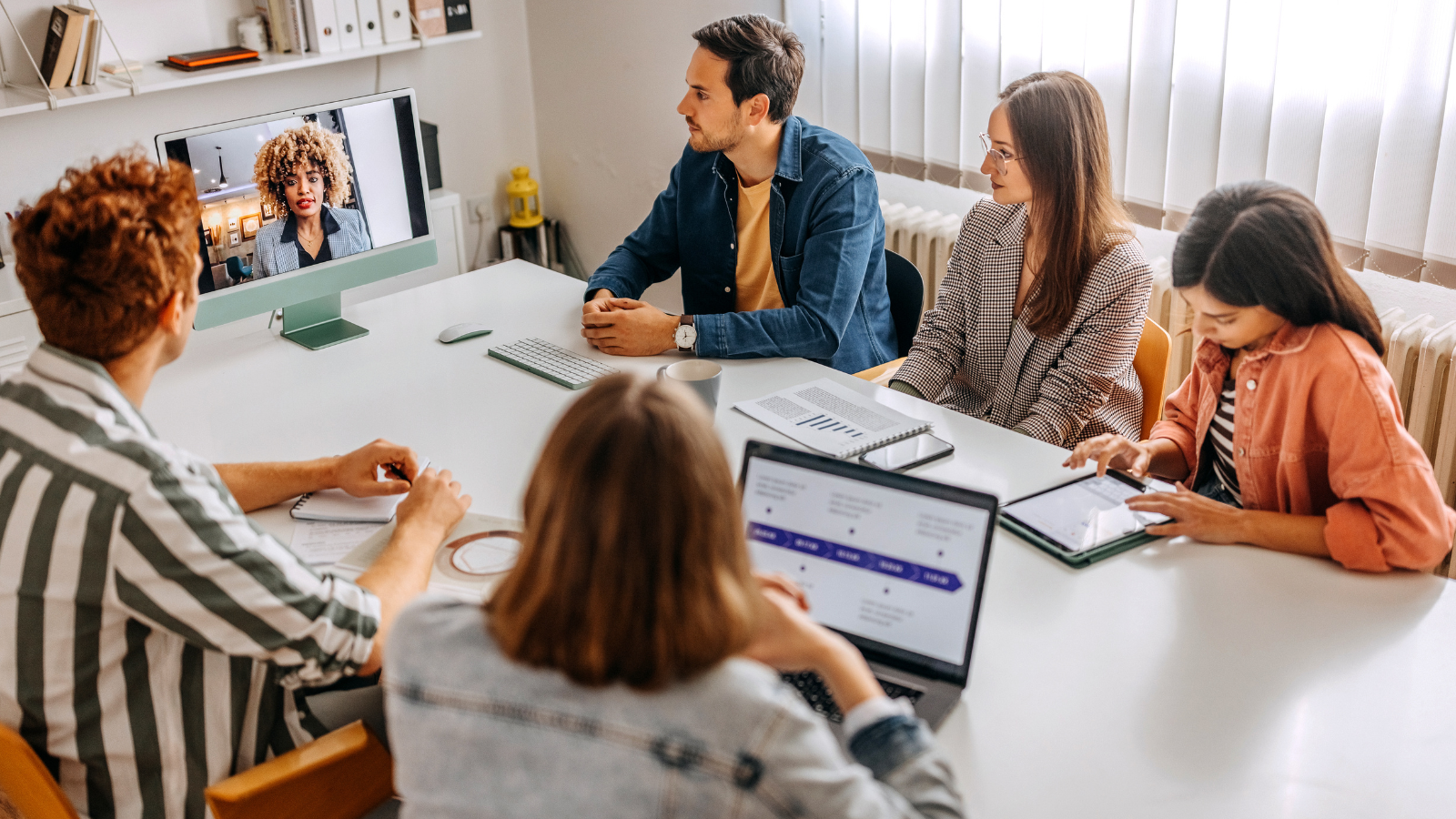A new report from Achieving the Dream, the Association of Public and Land-grant Universities, the Online Learning Consortium, and Every Learner Everywhere outlines a five-part community of practice framework — envisioning, designing, facilitating, evaluating, and sustaining.
This framework emerges from an analysis of existing communities of practice in higher education and their common elements and processes. The framework is outlined in a comprehensive guide, Communities of Practice in Higher Education: A Playbook for Centering Equity, Digital Learning, and Continuous Improvement. Users of the playbook will find strategies and resources for managing a community of practice with an emphasis on equity, digital learning, and continuous improvement. The playbook is accompanied by a literature review on communities of practice.
As the playbook outlines in the introduction, communities of practice can take on a broad range of formats, membership structures, and agendas. What they have in common is a group of people who share information, experiences, and practices through collaboration and dialogue in a common area of interest. They typically emphasize sharing information and experiences, exploring similar problems and opportunities, and developing new knowledge.

From Communities of Practice in Higher Education: A Playbook for Centering Equity, Digital Learning, and Continuous Improvement
Each section of the playbook includes numerous practical recommendations for organizers of communities of practice. A sample of those practical steps is excerpted and adapted below.
Envision the community of practice
Envisioning includes asking who the community of practice is for and what participants and stakeholders need in order to feel like they are included and they belong. It also involves identifying the key issues the community is responsive to and the nature of the learning, knowledge, and tasks the community will steward.
- Identify an artifact, resource, or presentation that participants will develop as either a representation of their learning, an action plan for implementing a strategy, or an asset that operationalizes a goal, such as equitizing a department-wide syllabus template. This helps participants stay engaged and work together over time to build, iterate, and consider scaling.
- Identify the major topic areas for community content and exploration, but it’s important to allow topics to shift, change, and emerge over time, which requires facilitators to be nimble, adaptive, and responsive.
- Consider what digital spaces will be created to support the work (i.e. a learning management system course page, a set of shared documents, digital white boards, etc.).
Design the community of practice
The design of a community of practice can include synchronous experiences such as a monthly meeting that can be conducted live online or face to face, and it can be supported by a digital space such as a course site in a learning management system.
- Find ways to vary perspectives, bring in minoritized voices, and welcome student voices to share feedback on topic selection or offer insight into issues they face. This can be done by identifying expertise in the room to lead aspects of the synchronous sessions.
- Reflect on what the end product or goal of your community of practice will be and regularly ensure that the group is collectively working toward it.
- Create a seamless digital space for participants to engage in during and after meetings to enable the community of practice to create a living artifact of learning and the co-creation of new knowledge and solutions.
Facilitate the community of practice
An equity-minded approach to facilitation starts with creating opportunities for all members to engage in discovery, contribution, and ownership.
- Cultivate a brave space by modeling honesty and self-awareness, which can help participants find comfort in being vulnerable about subjects they struggle with professionally or pedagogically.
- Support equitable facilitation and safe space creation by listening for understanding. Seeking to understand and empathize with others’ experiences and reactions, particularly those with different identities, sets the stage for authentic engagement, sharing, and active listening.
- Allow for emergent learning by balancing and discovering over time when to follow an agenda and when to take pause.
Evaluate the community of practice
While evaluation is not always required for communities of practice, it can benefit members by guiding goal setting early in the process, ensuring group accountability, and measuring the value of the experience for participants.
- A community of practice should ideally facilitate evaluation throughout its lifecycle. It is not a stage in the development, but a continuous process that begins during visioning.
- Determine a regular schedule for evaluation to facilitate continuous improvement of practices, which allows for real-time adjustment when a community has drifted from its original purpose and goals.
- To ensure transparency, facilitators might choose to collect all reflections electronically and share them with the group for asynchronous reflection.
Sustain the community of practice
The community will eventually need to consider whether it will continue with a similar purpose and structure, evolve toward a new purpose or structure, or disperse.
- Draw on evaluation feedback to decide whether the community has served its purpose.
- Consider how new members are being oriented and which roles and responsibilities old and new members should be responsible for.
- Discuss the various roles and responsibilities of a communities of practice leader, reflecting on the privileges that leadership affords and considering in what ways community members might be empowered to participate in the design, facilitation, and sustained engagements of the communities of practice.






